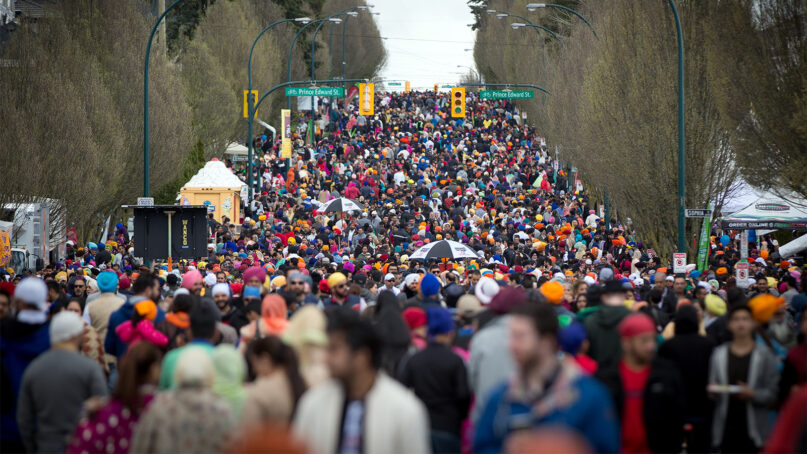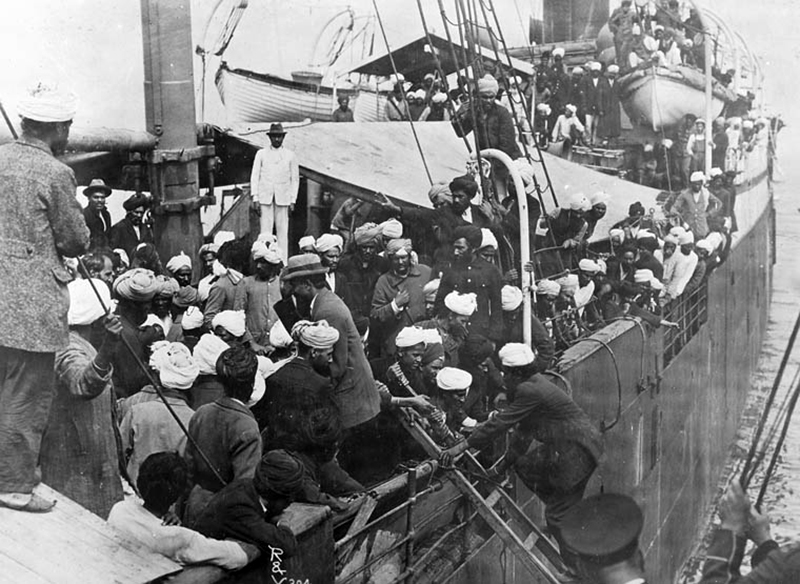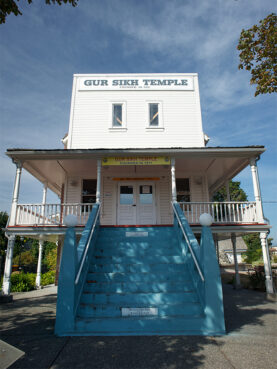The Sikhs next door — and across the border
(FAVS News) — A museum tells the history of Sikhs in British Columbia, the province’s second largest religious group after Christians.

(FAVS News) — The sight of two turbaned soldiers on black stallions posed next to a wood-framed Canadian frontier-style building is a clear hint that Sikhs have a history in the Pacific Northwest.
The soldier statues outside the Sikh Heritage Museum in Abbotsford, a Vancouver suburb, represent the first Sikhs to visit Western Canada, members of the British regiment in Hong Kong who traveled across the country in 1902 for the coronation of Edward VII.
Today there are about 800,000 Sikhs in Canada — the most of any country outside its birthplace of India — and April is celebrated as Sikh Heritage Month. The 250,000 Sikhs in British Columbia make the faith the province’s second largest religious group after Christians.
Worldwide, the Sikh faith, which dates back to the early 16th century, is the fifth largest in the world, with some 26 million followers.
In the United States, which has about 500,000 Sikhs, they are also concentrated mostly on the West coast, where Sikhs immigrated a century ago, often coming for jobs. They quickly moved into farming, mining and lumber industries in both countries. Manka Dhingra, an attorney based in Redmond, Washington, became the first U.S. Sikh woman to be elected to a state legislature in 2017, when she won a seat in the state senate.
The museum in Abbotsford tells of the ordeals Sikhs have suffered through the centuries. On its west side is a large bronze sculpture showing Punjabi Sikhs battling Mughals, a Muslim dynasty that ruled northern India between the 16th and 19th centuries.

Passengers on board the “Komogata Maru” in English Bay, Vancouver, British Columbia, Canada in 1914. Photo courtesy of Wikipedia/Creative Commons
On the east side is a paved courtyard with benches and a series of panels titled “Racism Meets Reliance.” It chronicles a three-monthlong standoff in mid-1914 when the Komagata Maru, a steamship whose 376 passengers were predominantly Sikhs, was stranded in the Burrard Inlet and not allowed to dock due to racist attitudes, despite many of the passengers having served in the British armed forces. The ship was forced to sail to India, where 200 of the surviving passengers ended up in prison.
Word of this incident spread, but little was done for decades. A letter of apology from the provincial legislative assembly, dated May 23, 2008, hangs in the museum. Stephen Harper, then prime minister of Canada, did apologize to a gathering of Sikhs, but it wasn’t until 2016 that Prime Minister Justin Trudeau formally apologized in Parliament.
On the top floor of the museum building is the Gur Sikh Temple, the oldest Sikh house of worship in North America, founded by families who had moved to the area from India.

The Gur Sikh Temple in Abbotsford, British Columbia. Photo by JacobSimmonds /Wikimedia/Creative Commons
“It was a farming community,” said Alysha Mahil, coordinator of the South Asian Studies Institute for the University of the Fraser Valley. “Back in India, land holdings were shrinking, and there was opportunity here.” Word of a good life in the New World drew the rural poor from around the globe.
Near the museum entrance is a pole called a “nishan sahib,” atop which flies the Sikh flag. In its early days, a light was mounted on it to alert Sikh immigrants in the United States (whose border is close to downtown Abbotsford) that it was safe to come visit their Canadian brethren.
Across the street, a much larger gurdwara, the Khalsa Diwan Society, is open all day and serves free vegetarian meals on the ground floor. Upstairs, there are screens with Sikh texts in Punjabi with English translations. The vast room is all in blue carpet with a blue-and-gold domed ceiling and a platform up front with Sikh Scriptures under ornate fabric.
The gurdwara is just one strand in Vancouver’s rich religious tapestry. Along the Number 5 Road in Richmond, a suburb close to Vancouver airport, are some 20 houses of worship in a single mile on what’s informally known as the “highway to heaven”: Buddhist temples, a small Hindu worship space, a large Shia mosque, numerous Chinese-language churches, a Jewish school and a Christian school and another Sikh gurdwara.
Abbotsford’s museum shows how long and twisting the history of Number 5 Road’s diversity has been.
No comments:
Post a Comment